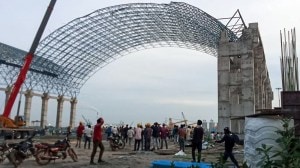Bihar: Before and After Laloo
This was an election in Bihar in which its voter’s voice could be heard, loud and clear. But a sprawling commentariat has already taken...

This was an election in Bihar in which its voter’s voice could be heard, loud and clear. But a sprawling commentariat has already taken over, feverishly decoding for you and me what the Bihari people really said. If you want to take a break and hear from Bihar again, in its own voice and in a language truly its own, no translation required by pollster or pundit, you might go back to Phanishwar Nath Renu.
Many place Renu’s Maila Aanchal next only to Prem Chand’s Godan. He went against the current of literary writing of his times. Before him, the language of the novel was one the people didn’t really speak. Renu changed that. He was the pioneer of ‘‘aanchalikta’’ or regionalism in Hindi literature. He handed over the viewfinder to the backward and the deprived long before Subaltern Studies announced itself a separate discipline.
Of course, none of that sensitivity to ground level stirrings came in useful at the hustings. Renu stood for elections as an Independent candidate in 1972 from Forbisganj constituency in his home district of Araria. He lost.
For more recent and more prosaic renderings of Bihar, you would have to begin with Arvind N. Das’s Republic of Bihar. This book came before the Laloo phenomenon dug in. But it helped set out the contours of that ‘‘dark hole’’ in the nation’s imagination, to which capitalism so spectacularly failed to bring modernity. As he put it best, in Bihar, it ‘‘merely combined the worst of agrarian pre-modernity with post-industrial post-modernity.’’ Das returned to Bihar with a social history of his village, Changel.
Vijay Nambisan’s Bihar is in the Eyes of the Beholder was published at the end of the Laloo decade in Bihar, in 2000. Nambisan took time off to live in a small town 100 km east of Patna. His wife had come to serve as a surgeon at the missionary hospital in Mokama Ghat. From Mokama Ghat, carved out between rival gangs of Bhumihars, he sought answers: how is it that this state, so rich and so fertile in its land, became so impoverished a home for its people, where even democracy denies more than it empowers. And yet, he wrote, democracy remains the only hope for equality and progress.
For a terse update in facts and figures of where Bihar is at, after decades of de-institutionalisation and underdevelopment, look at the World Bank report, Bihar: Towards a Development Strategy. It insists that the problems of Bihar may be well known but they are not well understood. It insists, also, that its main message is one of hope. Amid the generally morbid stats that speak of stasis, under-coverage and leakage — net primary enrolment actually fell over the ’90s, access to improved sanitation barely changed and Bihar has the country’s lowest utilisation rate for centrally funded programs — it reports on the many successes of the profitable Bihar State Cooperative Milk Producers Federation Ltd (COMFED) and its litchi industry which accounts for about 70 per cent of India’s total production.



- 01
- 02
- 03
- 04
- 05




























